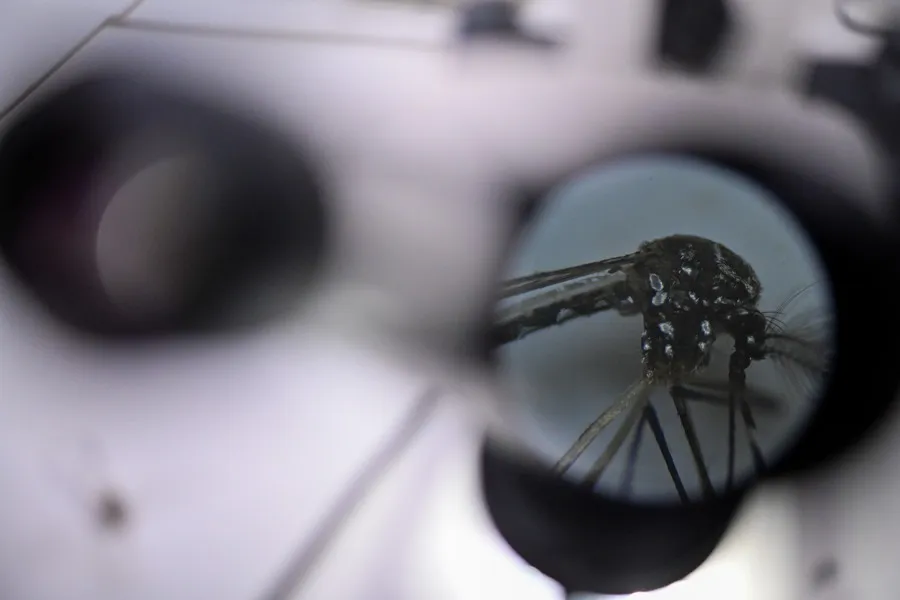International
Dengue will cover virtually all of Brazil and Mexico by 2039, according to a study

America is the continent most affected by dengue, with 8.1 million cases, and the situation will worsen in the coming years, according to a report that predicts that the infection will spread by 2039 to the practice the entire territory of Brazil and Mexico, the two largest countries in Latin America.
The research, published in the journal Nature Communications and in which scientists from Canada, the United Kingdom, Australia, the United States, Brazil and Mexico collaborated, predicts that by 2039 97% of the localities in Brazil will be affected by dengue, while in Mexico the figure will be 81%.
The analysis predicts that in Mexico the expansion of dengue will be mainly in the interior of the country, in the highest altitude areas of the central plateau.
The study estimates that the area of Tijuana, on the border with the United States, will be invaded between 2027 and 2030, and the area of Mexico City, between 2038 and 2039.
In Brazil, most of the areas invaded in the coming years will be in the south.
The situation is already alarming, according to experts from the Pan American Health Organization (PAHO) who met at the end of May in Washington, because so far this year, there are already three times more documented cases than the cases recorded in the same period of 2023. The deaths stand at 3,600.
The international team of researchers pointed out in their study that the spread of dengue, a febrile disease that is transmitted by the bite of a mosquito (Aedes aegypti) and that can cause difficulty breathing, severe bleeding and organ complications, will accelerate in the coming years due to the climate crisis and the greater mobility of the population.
The researchers used for the first time machine learning technology (known by artificial intelligence) to understand how the connection between areas and environmental conditions interact at the different stages of the infection, one of the scientists who participated in the study, Vinyas Harish, of the University of Toronto (Canada), told EFE.
“Many people have investigated environmental factors such as temperature, humidity, rain, to establish the relationship between those characteristics and mosquitoes,” Harish said.
“But to really understand how dengue affects the population, we needed to integrate that with data on the population’s mobility over time. We use machine learning to integrate those perspectives,” he added.
The data that the team used come from more than 8,000 municipalities in Brazil and Mexico during the past 25 years along with climate information, records of the appearance of epidemics and the history of genetic evolution.
In 1996, only 16 municipalities in Mexico (0.65% of the country’s total) were affected by dengue infection. But between 2000 and 2010, the infection expanded to 965 municipalities and by the end of 2019 the figure reached 1,350, 55% of the total.
In Brazil, the growth was similar. In 2001, dengue was only present in two states and 549 municipalities (9.96%). By 2019, the figure had exploded to 4,299 municipalities, 76.8%.
According to PAHO, there is no specific medicine to treat dengue, whose infection can occur without symptoms, or can be evidenced with symptoms ranging from a moderate fever to a high and incapacitating fever, headaches, muscle aches and rashes.
But Harish was optimistic since the conclusions of the study will allow the authorities to adopt preventive measures.
“From simple interventions, such as increasing awareness among the population to avoid the bites of these mosquitoes, to more complex, such as research on vaccines or mosquito replacement techniques,” he concluded.
Central America
Senator Van Hollen Meets with Deported MS-13 Member in El Salvador; Trump and Bukele React

U.S. Democratic Senator Chris Van Hollen, representing the state of Maryland, held a meeting in El Salvador with deported MS-13 gang member Kilmar Ábrego García, a member of the criminal group classified by the U.S. government as a terrorist organization.
“Kilmar Ábrego García, miraculously resurrected from the ‘extermination camps’ and ‘torture chambers,’ now sipping margaritas with Senator Van Hollen in the tropical paradise of El Salvador!” wrote President Nayib Bukeleon X (formerly Twitter), sharing photos of Van Hollen, Ábrego García, and a lawyer sitting together at a Salvadoran hotel.
The deported gang member is seen wearing a plaid shirt and a flat-brimmed cap, seated at a table with glasses and coffee cups. The senator also shared images of the meeting on his own social media accounts.
Bukele reaffirmed that Ábrego will remain in El Salvador and will not be returned to the United States.
“Now that his health has been confirmed, he has earned the honor of remaining under the custody of El Salvador,” Bukele added.
Former U.S. President Donald Trump criticized the senator’s meeting with Ábrego on Truth Social, calling Van Hollen “a fool” for advocating for Ábrego’s return to the U.S.
International
Pope Francis Appears for Easter Blessing, Calls for Peace and Religious Freedom

Pope Francis, still recovering from pneumonia, appeared on the balcony of St. Peter’s Basilica in the Vatican on Easter Sunday and, with a faint voice, wished a “Happy Easter” to the thousands of faithful gathered to celebrate the Resurrection of Christ.
A month after being discharged from a lengthy hospital stay, the presence of the 88-year-old pontiff had remained uncertain, with the Vatican not confirming his attendance ahead of time.
Eventually, the pope made a brief appearance in a wheelchair shortly after 12:00 p.m. (10:00 GMT) to deliver his traditional “Urbi et Orbi” blessing (“to the city and to the world”).
Although no longer wearing an oxygen cannula, the Argentine Jesuit relied on a close aide to read his Easter message, which touched on major global conflicts.
Francis condemned the “dramatic and unworthy humanitarian crisis” in Gaza and called for a ceasefire, while also expressing concern over the “growing climate of antisemitism spreading across the globe.”
He further emphasized the importance of religious freedom and freedom of thought, stating that without mutual respect, “peace is not possible.”
International
Thousands rally nationwide against Trump’s threat to U.S. democracy

Thousands of protesters gathered on Saturday (April 19, 2025) in major cities like New York and Washington, as well as in small communities across the United States, in a second wave of demonstrations against President Donald Trump. The crowds denounced what they view as growing threats to the country’s democratic ideals.
In New York City, demonstrators of all ages rallied in front of the Public Library near Trump Tower, holding signs accusing the president of undermining democratic institutions and judicial independence.
Many protesters also criticized Trump’s hardline immigration policies, including mass deportations and raids targeting undocumented migrants.
“Democracy is in grave danger,” said Kathy Valyi, 73, the daughter of Holocaust survivors. She told AFP that the stories her parents shared about Adolf Hitler’s rise to power in 1930s Germany “are happening here now.”
In Washington, demonstrators voiced concern over what they see as Trump’s disregard for long-standing constitutional norms, such as the right to due process.
-

 International5 days ago
International5 days agoArsenal stun Real Madrid at the Bernabéu to reach Champions League semifinals
-

 Central America4 days ago
Central America4 days agoNicaraguan Exiles to Mark 7th Anniversary of 2018 Protests with Global Commemorations
-

 International4 days ago
International4 days agoDominican ‘False Hero’ Arrested for Faking Role in Nightclub Collapse That Killed 231
-

 International3 days ago
International3 days agoACLU seeks emergency court order to stop venezuelan deportations under Wartime Law
-

 International5 days ago
International5 days agoBogotá residents line up for yellow fever vaccine amid national alert
-

 International5 days ago
International5 days agoDeSantis’ immigration crackdown sparks alarm in Venezuelan Communities in Doral
-

 Central America3 days ago
Central America3 days agoUN complaint filed against Costa Rica over detention of migrant children
-

 International5 days ago
International5 days agoMexico refuses to restore ties with Ecuador while Noboa remains in office
-

 International1 day ago
International1 day agoThousands rally nationwide against Trump’s threat to U.S. democracy
-

 Central America15 hours ago
Central America15 hours agoSenator Van Hollen Meets with Deported MS-13 Member in El Salvador; Trump and Bukele React
-

 International15 hours ago
International15 hours agoPope Francis Appears for Easter Blessing, Calls for Peace and Religious Freedom















